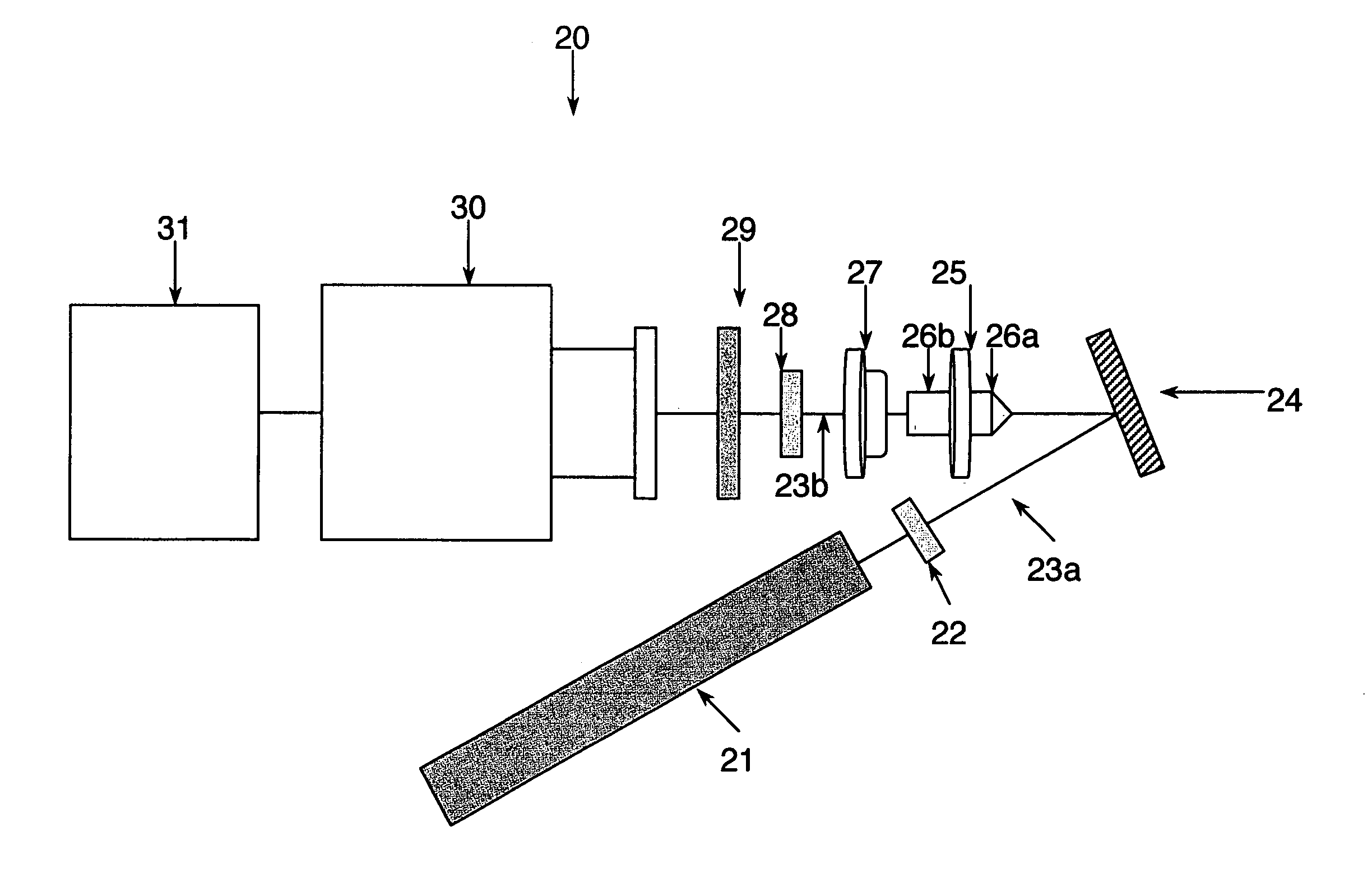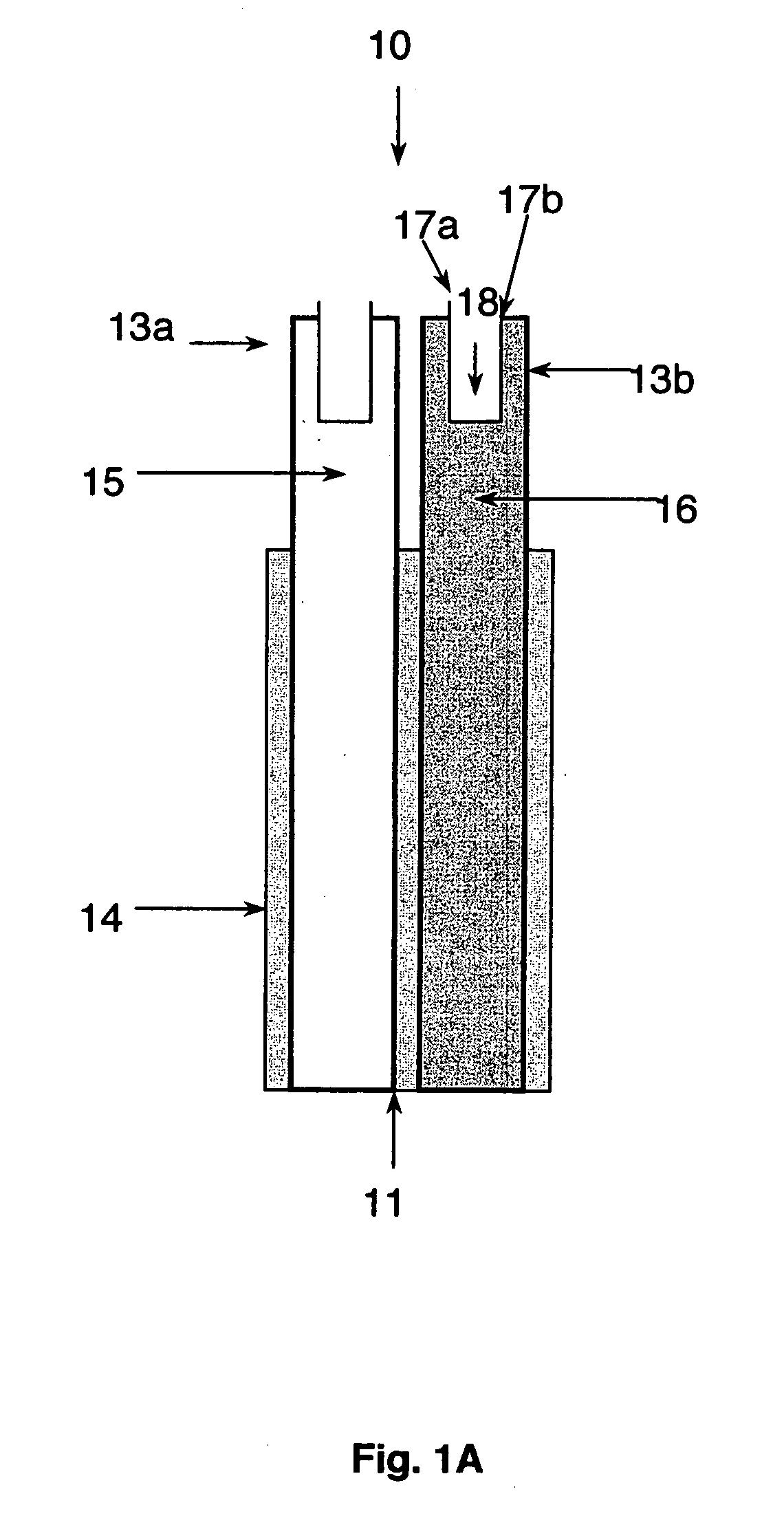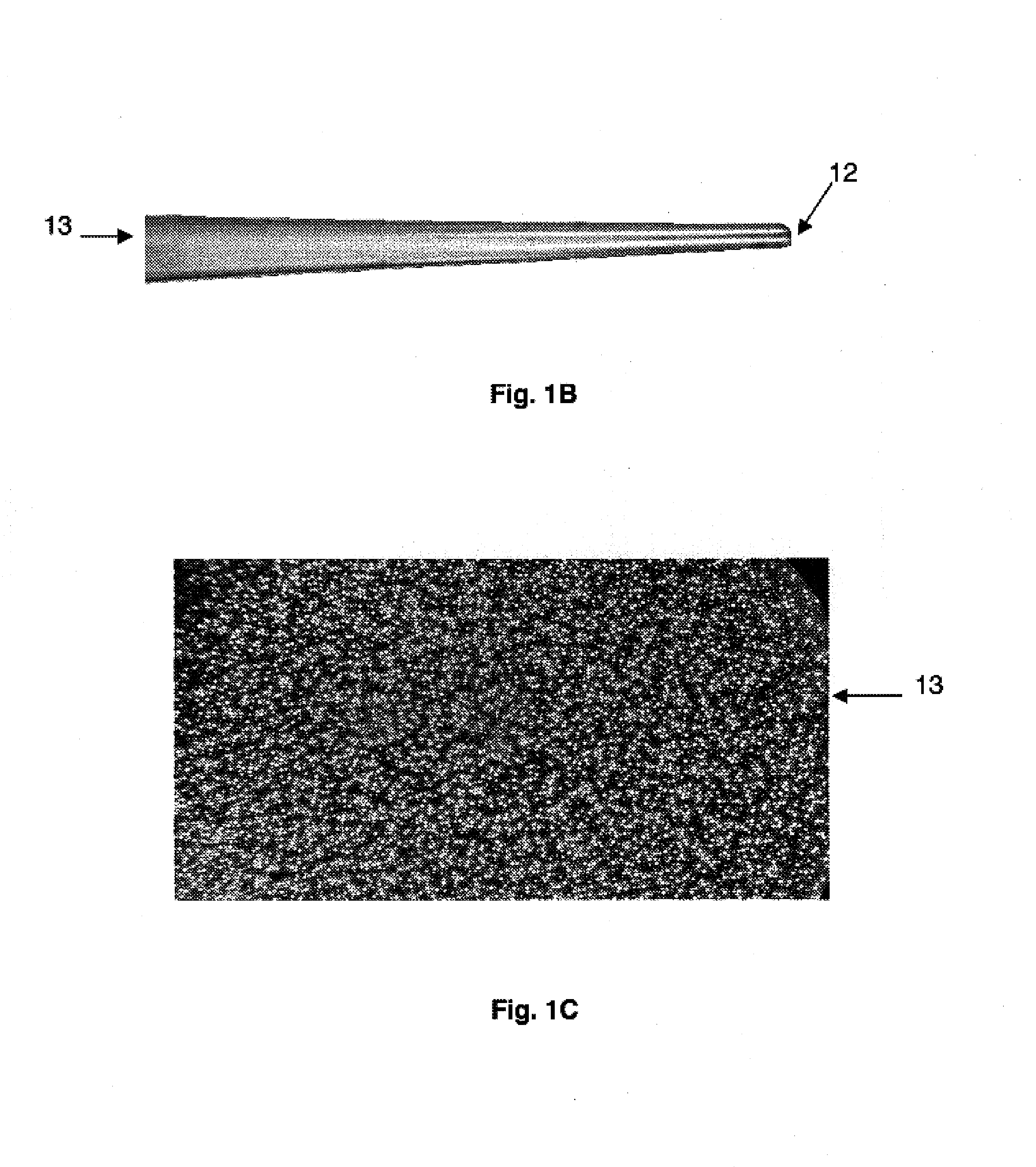Surface enhanced Raman spectroscopic nano-imaging probe and uses therefor
a raman spectroscopic and nano-imaging technology, applied in the field oframan spectroscopy and imaging, can solve the problems of limiting the use of sers as imaging techniques, preventing the imaging of nanometer-sized objects, and limiting the spatial resolution of such analyses, so as to prevent image warping
- Summary
- Abstract
- Description
- Claims
- Application Information
AI Technical Summary
Benefits of technology
Problems solved by technology
Method used
Image
Examples
example 1
Fabrication of Tapered Fiber Optic Imaging Bundle
[0046]Both ends of a 3-inch section of fiber optic imaging bundle are polished smooth using lapping paper. A one-inch section of protective jacket is removed from the center of the fiber bundle through mechanical processes, e.g., removal with a razor blade. The polished and jacket-stripped fiber is then suspended between the two tension mount clamps of a CO2 laser based micropipette puller (Sutter Instruments P-2000) and tapered. The micropipette puller utilizes a CO2 laser to heat the fiber while a tension device pulls along the fiber axis. By varying the programmable pulling parameters, i.e., temperature, heat time, cooling delay time, and the force with which the tension mount clamps separate, flat, tapered probe tips of varying diameters are reproducibly created. As confirmed from SEM images of tapered bundles, an even heating throughout the entire bundle occurs, resulting in each fiber element being equally drawn. After being tap...
example 2
Etching the Tapered Ends
[0048]SERS active surfaces are applied to the tapered tip of the fiber optic imaging bundle to provide the chemical differentiation and imaging capabilities to the fiber optic nano-imaging probes while overcoming the SERS enhancement reproducibility issues associated with SERS imaging. The cladding surrounding each of the individual fiber elements provides the uniformly patterned underlying surface roughness upon which metal vapor is deposited via vacuum evaporation. The tapered fiber tips are placed in a solution of hydrofluoric acid in a process similar to that used to create microwell arrays in untapered fiber optic bundles (37-40). Due to the small size of the tapered fibers and the minimal amount of material to be etched out of the cores of the individual fiber elements, the tapered tips of the fibers were only suspended in the 25% hydrofluoric acid (HF; Aldrich) in water solution for periods of time ranging from 2-7 minutes depending upon the size of th...
example 3
Silver Deposition
[0050]Once the desired underlying probe roughness was achieved with HF etching, an overlayer of silver is deposited by evaporating 99.999% pure silver shot (Kurt. J. Lesker Company) using an Explorer™-14 (Denton Vacuum) vacuum evaporator. In this procedure, the etched probe is suspended 15 cm above a tungsten boat (R. D. Mathis Company) containing the evaporating silver. The probes are oriented with the etched tips facing down toward the silver below and at a slight angle. This angle ensures that the silver selectively deposits on the cladding spikes instead of the cores, thereby providing a highly ordered silver island-like SERS structure. The silver is deposited at a rate of 1.8 nm / s, under a pressure of 3.0×10−6 Torr.
[0051]Monitoring of the amount of silver deposited is accomplished using a quartz crystal microbalance (Inficon XTM / 2 film thickness monitor) mounted beside the sample holder in the vacuum chamber. By depositing silver in this method, and varying the...
PUM
| Property | Measurement | Unit |
|---|---|---|
| diameter | aaaaa | aaaaa |
| diameter | aaaaa | aaaaa |
| diameter | aaaaa | aaaaa |
Abstract
Description
Claims
Application Information
 Login to View More
Login to View More - R&D
- Intellectual Property
- Life Sciences
- Materials
- Tech Scout
- Unparalleled Data Quality
- Higher Quality Content
- 60% Fewer Hallucinations
Browse by: Latest US Patents, China's latest patents, Technical Efficacy Thesaurus, Application Domain, Technology Topic, Popular Technical Reports.
© 2025 PatSnap. All rights reserved.Legal|Privacy policy|Modern Slavery Act Transparency Statement|Sitemap|About US| Contact US: help@patsnap.com



